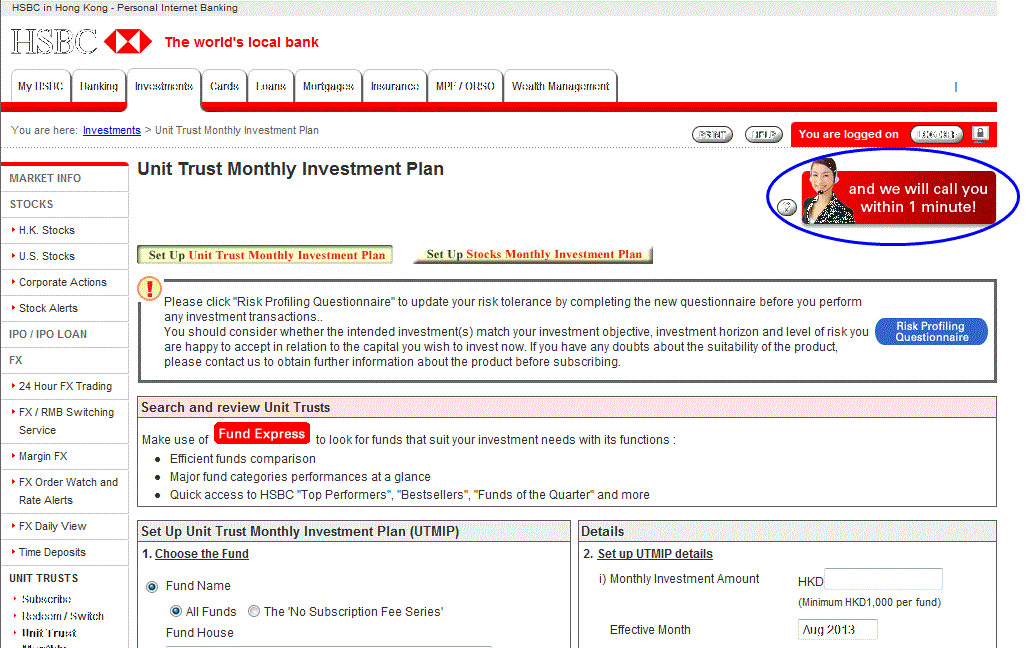Margin FX HSBC Hong Kong
Post on: 16 Март, 2015 No Comment

Technical FAQ
Answers: Business FAQ
A1: What is a Market Order?
A market order is executed immediately when placed and is priced at the prevailing market rate at the time of execution. When placing a market order, the transaction is usually executed at, or very near, the price displayed when the order was submitted. However, due to the rapidly changing nature of FX exchange rates, it is possible for the rate to move more than you are willing to accept.
To address this, HSBC Margin FX platform enables you to place upper and lower bound on each order that will prohibit the order’s execution if the market rate falls outside the limits you specify. The customer is also allowed to set up stop loss, take profit and trailing stop instructions under Market Order.
A2: What is a Limit Order?
A limit order is the order to buy or sell a currency pair at a specified price within a defined period. When the specified price is reached, the limit order will be executed.
A3: What is a Take Profit Order?
A take profit order is used to lock in profits in the event a currency moves in a favourable direction from the current level.
A4: What is a Stop Loss Order?
A stop loss order is similar to a take profit order but rather than locking in a profit, this order type sets a threshold to prevent continuing losses by automatically closing a position once the exchange rate reaches the level you assign to the order.
A5: What is a Trailing Stop Order?
Trailing stop order is a stop loss order where the price at which an open position is closed changes dynamically based on a specified spread from the relevant quotation price. If the relevant quotation price for an open position moves in a favourable direction but stays unchanged if the relevant quotation price for an open position moves in an unfavourable direction.
A6: What is the difference between an order, trade, and position?
An order is the expressed intention to buy or sell currency. A trade is the execution of the order. A position is the aggregate of all trades for a particular currency pair.
In the case where only one trade is open for a given currency pair, sometimes the terms trade and position are used interchangeably.
A7: What are bid and ask price?
Each currency pair listed is accompanied by an exchange rate that shows the bid and ask price. The bid price is the rate that the market/broker is willing to buy for the currency pair; in other words, this is the rate you sell the currency pair to the market. The ask price is the rate at which the market/broker is willing to sell and it represents the rate you buy the currency pair.
The difference between the bid and the ask price is referred to as the spread. The bid price is always less than the ask price.
A8: What is a ‘unit’?
‘unit’ is the base currency in a currency pair. For example:

1 unit of USD/CAD, USD/CHF or USD/JPY would equal 1 US Dollar.
1 unit of EUR/USD, EUR/CHF or EUR/HKD would equal 1 Euro.
This provides the flexibility for you to specify an amount that suit your investment need. The maximum trade size is 5 million units of trading currency.
A9: What is a ‘pip’?
Pip is the abbreviation of price interest point. One pip for most currency pairs is referring to the 4th decimal place of the exchange rate. For currency pair that involves JPY, one pip is referring 2nd decimal place of the exchange rate. Another term ‘pipettes’ is 1/10 of pip.
A10: How do I open an account?
You need to go through our online application process. Your risk attitude, previous investment experience and other related factors will be reviewed in the application. It usually takes 2 to 3 working days to complete. You will receive confirmation letter and email upon account opening.
A11: What is the minimum account balance?
The minimum deposit for opening of margin FX trading services is USD 10,000 or equivalent. The deposit can be placed in any of your collateral accounts.














